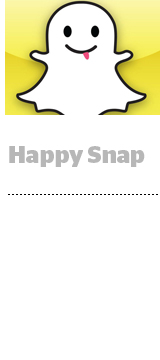
Snap finally snapped out of its earnings slump on Tuesday as it beat analyst expectations for both revenue and daily active user growth.
Revenue in 2017 reached $825 million, a 104% increase from the year before, while 2017 Q4 revenue grew 72% to roughly $286 million, topping analysts’ quarterly estimates of $253 million.
“Our business really came together toward the end of last year,” CEO Evan Spiegel said on the company’s earnings call.
Daily active users in 2017 grew 18% year-over-year to 187 million. For the quarter, DAUs increased 5% or by 8.9 million users; analysts predicted quarterly DAU to only grow by 6 million.
Average annual revenue per user grew 45% year-over-year and 31% sequentially to $1.53.
Shares jumped 28% in after-hours trading.
Brand Boom
Brands and agencies, enthusiastic about Snap as an alternative to Facebook and Google, continued to spend on the platform in 2017.
Ad revenue for the quarter grew 38% compared to Q3, and annual ad revenue soared 74% year over year to $281 million. All big-name brands that advertised on Snapchat in 2016 returned in 2017, and more than 90% of them spent every quarter of 2017.
“We have a client base that is absolutely enthralled with what they’re getting from Snap,” Lance Neuhasuer, CEO of Snap ads partner 4C Insights, told AdExchanger before the earnings call. “Results are moving in the right direction.”
More brands have warmed to Snap since it launched its first-party measurement pixel in November. One out of three advertisers spent their first dollar on the platform after gaining access to the pixel, said chief strategy officer Imran Khan.
“Many of these advertisers were not spending with us until we had stronger first-party measurement solutions,” Khan said.
But Snap warned investors that brand spending, which usually peaks in Q4, could fall in Q1 and lead to lower revenue.
“As the business has more scale, we think year-over-year growth is the best metric to look at,” chief financial officer Drew Vollero said during the call.
Snap is also making inroads with small businesses. After making its self-serve platform available in January 2017, revenue from SMBs doubled between Q3 and Q4 and made up more than half of Snap’s revenue for the first time in Q4, Khan said.
“We’re just getting started,” he said. “There are 26 million small to mid-size businesses out there, and we want to capture a big chunk of that.”
Despite a successful quarter with advertisers, Snap must continue innovating to stay relevant with users.
“If they’re just trying to compete from an ad tech perspective with Facebook and Google, it will be difficult,” 4C’s Neuhauser said. “But if they continue to play to their own strengths, like unique content, creative experiences and attractive brand opportunities, they control their own destiny.”
Programmatic Push
Programmatic was the fastest growing segment of Snap’s business in 2017. Ninety percent of Snap Ads were served programmatically in Q4; that’s up from 80% in Q3 and an increase of 575% year over year, Vollero said. And the number of advertisers buying programmatically doubled from Q3, Khan said.
Snap declined to say what percentage of its revenue came from programmatic versus direct sales.
“The driver of the business is going to be Snap Ads and the auction for the foreseeable future,” Vollero said.
CPMs, however, declined 25% in Q4, continuing a pattern of sinking prices that began in Q3, which the company said was an effect of switching the bulk of its buying to a programmatic auction. Overall Snap ad pricing declined more than 15% in Q4 compared to 2016 Q4, and 70% on an annual basis.
“As expected, revenue gains driven by growth in ad impressions were partially offset by Snapchat pricing, which fell due to the shift to programmatic,” Vollero said.
Khan said Snap won’t compromise user privacy by opening its inventory to third-party demand-side platforms (DSPs) and exchanges, which would likely increase prices.
“When you open up to third-party DSP providers, there are always risks that some of the user IDs will leave our platform,” he said. “We’re really focused on user privacy, so I don’t think we’re interested in doing that.”
This post was syndicated from Ad Exchanger.

More Stories
Cookie-Related Quips To Get You Through Google’s THIRD Third-Party Cookie Delay
Newsable wins Best New Audio Product at global awards
Taika Waititi and Future Bring Luxury With a Twist to Belvedere Ad